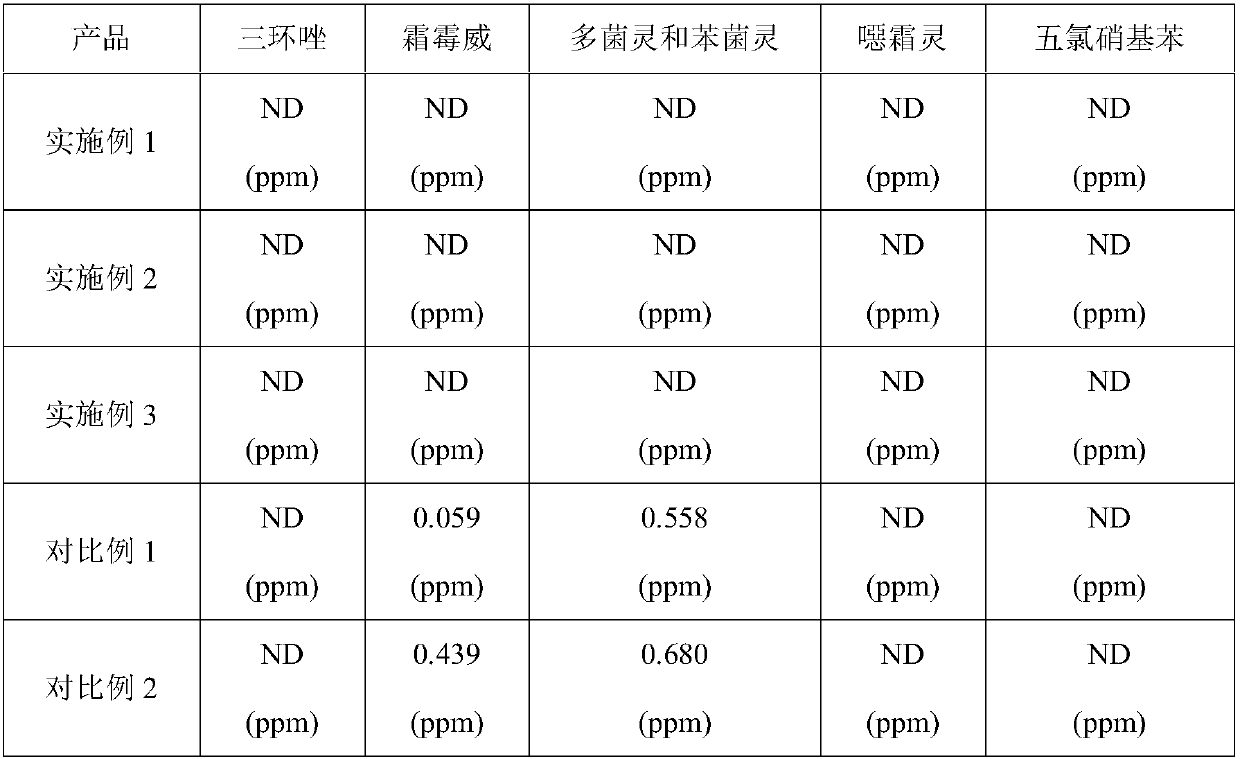Low-pesticide residue ginseng stem leaf extract and preparation method thereof
A technology of ginseng stems and leaves and extracts, which is applied in the direction of pharmaceutical formulas, plant raw materials, medical preparations containing active ingredients, etc., can solve problems such as low yield, waste of reagents, and environmental pollution, and achieve easy operation and high production technology. easy effect
- Summary
- Abstract
- Description
- Claims
- Application Information
AI Technical Summary
Problems solved by technology
Method used
Image
Examples
Embodiment 1
[0052] Get 500g ginseng stems and leaves and crush them into 20 mesh coarse powder, add 90% ethanol and reflux extraction twice, the amount of ethanol added each time is respectively 10 times and 8 times the mass of ginseng stems and leaves, and the heating and reflux extraction time at 150°C is respectively 2 and 1.5h, filter with 200-mesh filter cloth, combine the filtrates, concentrate under reduced pressure at -0.09MPa, replenish water and concentrate until there is no alcohol smell, put it in the refrigerator at 4°C for 12h, centrifugal filter, take the supernatant and concentrate under reduced pressure at -0.09MPa to Extract, add 100ml methanol to dissolve, filter paper, the filtrate is subjected to SephadexLH-20 (manufacturer: Shanghai Baoman Biotechnology Co., Ltd.) gel column chromatography, flow rate 5s per drop, with every 50ml as a cut to collect the next column liquid, It was detected by thin-layer chromatography, and 2 μL of each lower column liquid and reference ...
Embodiment 2
[0054] Get 600g ginseng stems and leaves and crush them into 24 mesh coarse powder, add 80% ethanol to reflux and extract twice, the amount of ethanol added each time is respectively 10 times and 8 times the mass of ginseng stems and leaves, and the extraction time under 150°C under reflux is respectively 2 and 1.5h, filter with 200-mesh filter cloth, combine the filtrates, concentrate under reduced pressure at -0.08MPa, replenish water and concentrate until there is no alcohol smell, put it in the refrigerator at 4°C for 8h, centrifugal filter, take the supernatant and concentrate under reduced pressure at -0.08MPa to Extract, add 100ml methanol to dissolve, filter with filter paper, the filtrate is subjected to SephadexLH-20 gel column chromatography, flow rate is 5s per drop, and every 60ml is used as a fraction to collect the next column liquid, and it is detected by thin-layer chromatography. 2 μL each of the column solution and the reference substance were spotted on the ...
Embodiment 3
[0056] Get 1000g ginseng stems and leaves and crush them into 24 mesh coarse powder, add 70% ethanol to reflux and extract twice, the amount of ethanol added each time is 10 times and 8 times the mass of ginseng stems and leaves respectively, and the extraction time under 160°C under reflux is respectively 2 and 1.5h, filter with 200-mesh filter cloth, combine the filtrates, concentrate under reduced pressure at -0.08MPa, replenish water and concentrate until there is no alcohol smell, put it in the refrigerator at 4°C for 10h, and filter centrifugally, take the supernatant and concentrate under reduced pressure at -0.08MPa to Extract, add 200ml of methanol to dissolve, filter with filter paper, the filtrate is subjected to SephadexG-10 (manufacturer: Shanghai Baoman Biotechnology Co., Ltd.) gel column chromatography, the flow rate is 6 seconds per drop, and every 100ml is used as a fraction to collect the next column liquid , detected by thin-layer chromatography, draw 2 μL ea...
PUM
| Property | Measurement | Unit |
|---|---|---|
| Mesh | aaaaa | aaaaa |
Abstract
Description
Claims
Application Information
 Login to View More
Login to View More - R&D
- Intellectual Property
- Life Sciences
- Materials
- Tech Scout
- Unparalleled Data Quality
- Higher Quality Content
- 60% Fewer Hallucinations
Browse by: Latest US Patents, China's latest patents, Technical Efficacy Thesaurus, Application Domain, Technology Topic, Popular Technical Reports.
© 2025 PatSnap. All rights reserved.Legal|Privacy policy|Modern Slavery Act Transparency Statement|Sitemap|About US| Contact US: help@patsnap.com

